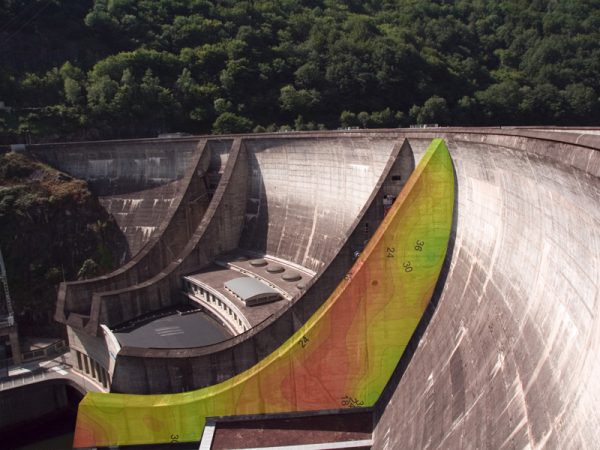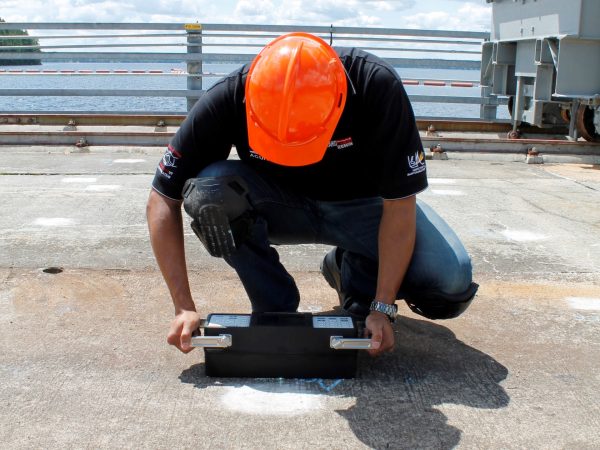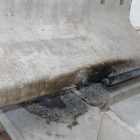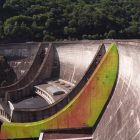Introduction
Nondestructive testing and evaluation (NDT&E) play a crucial role in ensuring the safety and integrity of concrete dams and hydro structures. With the growing emphasis on dam safety and the need to prolong the service life of these critical infrastructure assets, the application of advanced NDT&E techniques has become indispensable. By providing valuable insights into the condition of dams and associated components without causing structural harm, NDT&E helps mitigate risks, reduce life cycle costs, and ensure the long-term sustainability of these essential water resources projects. This article briefly reviews how we can enhance dam safety through nondestructive testing.
Enhance Dam Safety through Nondestructive Testing
The safety of concrete dams is paramount, as failure can result in catastrophic consequences, including loss of life, property damage, and environmental devastation. NDT techniques offer a proactive approach to identify potential issues, assess structural health, and implement timely maintenance and repair measures, thereby enhancing dam safety and resilience. By detecting defects, deterioration, and performance deficiencies early on, NDT helps prevent accidents, minimize downtime, and optimize asset management strategies, ultimately safeguarding public safety and water resource sustainability.
The following sections present some of the most widely used digital inspection solutions as well as nondestructive testing methods for dam and hydro structure safety assessment.

1. Digital Inspection for Dams
The use of drone based photogrammetry and LiDAR scanning had gained interest among dam safety engineers. These techniques provide an accurate assessment while minimizing inspection timelines, and reducing risks by eliminating (minimizing) the need for rope access inspectors.
Photogrammetry involves the use of overlapping photographs captured from multiple angles to create precise 3D models of concrete dams and structures. By deploying drones equipped with high-resolution cameras, engineers can conduct aerial surveys and generate detailed orthophotos and point clouds of dam surfaces.
Photogrammetric techniques enable accurate measurement of surface deformations, cracks, and other anomalies, facilitating comprehensive visual inspections and structural assessments. The 3D models obtained through photogrammetry provide valuable data for evaluating dam stability, monitoring changes over time, and prioritizing maintenance interventions.
LiDAR (Light Detection and Ranging) technology utilizes laser pulses to create 3D representations of dam geometry and topography with exceptional accuracy and resolution. By mounting LiDAR sensors on drones or terrestrial platforms, engineers can capture detailed elevation data and detect subtle variations in dam structure and terrain.
LiDAR scans enable precise measurements of dam dimensions, surface profiles, and displacement patterns, offering valuable insights into potential safety hazards, such as slope instability, erosion, and foundation settlement. The high-resolution point clouds generated by LiDAR facilitate in-depth analysis and visualization of dam conditions, supporting informed decision-making and risk management strategies.
2- Multi-Nondestructive Testing for Dams
Nondestructive testing and evaluation play a vital role in enhancing dam safety and prolonging the service life of concrete dams and hydro structures. Various nondestructive testing methods can be used to evaluate the quality, integrity and structural details of hydro structures.
Ground Penetrating Radar
Ground Penetrating Radar (GPR) is a valuable nondestructive testing (NDT) technique for assessing the condition of spillways, which are critical components of dam infrastructure responsible for controlling the flow of water and preventing erosion. Here are some specific applications of GPR for spillway assessment:
- Detection of Subsurface Anomalies in the Spillways
- Mapping of Concrete Spillway Thickness
- Identification of Reinforcement Layout, Cover thickness,
- Detection of Subsurface Water Intrusion
- Corrosion Assessment in the spillways and crown bridge.
Ultrasonic Pulse Echo Tomography
Ultrasonic Pulse Echo (UPE) testing is a powerful nondestructive technique for assessing the condition of concrete spillways, providing valuable insights into the integrity and durability of the structure. UPE can detect internal voids, honeycombing, and other defects within the concrete structure. UPE can also measure the thickness of concrete linings and identify variations in thickness across the spillway surface. This information is crucial for assessing structural integrity, determining the remaining service life, and planning maintenance and repair activities.
Here’s how UPE can help in the assessment of concrete spillways:
- Detection of Delaminations and Debonding
- Evaluation of Concrete Thickness
- Identification of Internal Voids and Defects

Spectral Analysis of Surface Waves (SASW)
The Spectral Analysis of Surface Waves (SASW) method has many applications in material characterization of multilayer systems. This can be used for in-situ evaluation of concrete quality, thickness of layer and boundary condition in multilayer systems as well as estimating the modulus elasticity. The SASW is a seismic exploration, which relies on the determining the stiffness of medium. SASW is a powerful method when only a single side access is available. Olson and Sack (1995) argues that “The SASW method is capable of providing the shear wave velocity versus depth profile of a structure, including measurements of the velocity of soils or rock behind the structure, with no coring or other damage to the structure required.” The SASW method can also be used to identify freeze and thaw defects in concrete spillways.
Conclusion
Nondestructive testing and evaluation play a vital role in enhancing dam safety and prolonging the service life of concrete dams and hydro structures. By leveraging advanced visual inspection technologies such as photogrammetry and LiDAR, engineers can conduct comprehensive assessments of dam conditions, identify potential risks, and prioritize maintenance activities. Additionally, the integration of multi-technology NDT approaches enables thorough evaluation of spillways and crown bridges, further strengthening dam safety measures. Through proactive monitoring, timely interventions, and informed decision-making, NDT&E contributes to the sustainable management of water resources infrastructure, safeguarding communities and ecosystems for generations to come.



